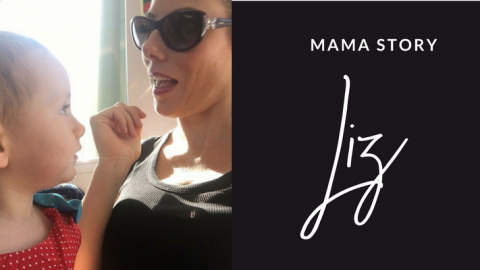How to choose the best primary school for your child
Of the 49,327,186 decisions you’ve made to date as a mum, there’s one that could significantly shape your child’s future…
Choosing the school that’s right for them.
With education options aplenty across public, private, catholic, Steiner or Montessori settings choosing the best fit for your 5-year-old can – quite literally – keep you up at night.
Public schools – typically the most affordable – provide government-funded education accessible to all children, promoting diversity and inclusivity. Private schools provide a tailored curriculum, and usually offer excellent facilities and resources. While tuition fees are required, private schools can offer scholarships that can help make them more accessible. Catholic schools, with moderate fees, infuse religious teachings with academic learning, fostering values-based education. Steiner and Montessori schools take a more holistic approach, nurturing creativity and individuality. Their fees will vary depending on their approach to education.
But what other factors should you consider before you pack your child’s lunchbox and kiss them goodbye and the school gate?
What to consider when choosing your child’s school
1.Educational philosophies
First things first, get your head around all of the different educational philosophies each school offers. Public schools, being government-funded, generally follow a standardised curriculum. Private schools may provide more flexibility in curriculum design and teaching methods. Catholic schools integrate religious teachings into their curriculum. Steiner and Montessori schools focus on holistic development, creativity, and experiential learning. Which philosophy resonates most with your beliefs, family values, and your child’s learning style?
2. Quality of education
Research past academic results of the schools you’re considering. This can include standardised test scores, attendance rates, graduation rates, and any awards or recognition they have received. Speak to parents of current students to get a firsthand perspective on the quality of education and the school’s ability to nurture students’ intellectual growth.
3. Extracurricular activities
A great education can be further enhanced by extracurricular activities. Sports, arts, music, and clubs contribute to your child’s personal development and provide opportunities for them to explore their interests beyond the classroom, and expand their social circles. If this is important to you, and you’re currently figuring out how to choose the best primary school for you child, find out which schools might offer extracurricular options that align with your child’s passions.

How to choose the best primary school for your child: Fewer students per class allows for more opportunities to participate in classroom discussions, share ideas and express opinions or experiences
4. Class sizes and teacher-student ratios
Small class sizes make for quieter, and therefore better learning environments. Similarly, smaller class sizes may lead to more individualised support and attention for students. Fewer students per class also allow for more opportunities to participate in classroom discussions, share ideas and express opinions or experiences. Another bonus about lower teacher-student ratios is that teachers have more opportunities to tailor their teaching approaches to meet each child’s needs – especially important when foundational skills in reading, writing and maths are being established.
5. Location and proximity to your house or workplace
The school’s location will impact on your and your child’s daily routine. Do you really want to zig zag across the city twice a day, every day to get from home, to school, to work, and then back again? If you’re sending your child to a school based on zoning rules, consider how much commute time you’re committing to. Remember, a school that’s closer to home might help everyone enjoy balanced family life, plus give your child more time for extracurricular activities outside of school.
6. Cost and affordability
Let’s be honest – regardless of what’s on your school wish-list, cost and affordability can be the first and last deciding factor when choosing a school for your child. But if you are considering Private, Catholic or alternative schools (Steiner, Montessori), it’s essential to assess if your family budget can accommodate your choice. Remember educational costs can include uniforms, textbooks, transport, camps, excursions, incursions – not just tuition fees.
7. Culture and values
All schools vary in cultures and values that will shape the overall environment and shape your child’s learning experience. The best way to get a feel of culture is to visit the schools on your list. You can do this on an open day or by private tour (phone the school and request a private tour, they are usually very obliging). Private tours can be a great way to see how the school usually operates on any given day, not just when it is ‘on show’, plus you can chat at length with the principal or school representative during the tour. (Tip: Write a list of questions as there’s often so much to take in at the time!) Also, it’s okay to tour a school more than once!
8. Parental involvement
How much do your preferred schools encourage parental involvement? And is this something you’re keen about? Some schools actively involve parents through regular parent / teacher meetings, volunteer opportunities and working bees, and family events. Strong school-home partnerships can positively impact your child’s learning experience, help keep you up to speed about your child’s progress, and help you develop an amazing local network too.
9. Special education and support services
If your child has specific learning needs or requires special education services, it’s crucial to explore how well the school can support these needs. Ask about the availability of learning support, counselling and wellbeing services, or anything else that your child needs to thrive at school.
10. Future plans
Future plans: It’s important to find a school that suits your child’s current needs, also consider the long-term implications. Will the chosen school provide a solid foundation for their future education (it is a feeder school for your preferred secondary school?) and even potential career pursuits? Look at how the school supports the transition to higher grade levels and into secondary or even tertiary education.
If you’re going round in circles trying to figure out how to choose the best primary school for you child, remember, there’s no one-size-fits-all solution. So, start exploring your options early to allow yourself plenty of time to visit, research and weigh up all options available to you.
And sometimes, it may come down to gut feel.
But if the other 49,327,186 parenting decisions you made previously are anything to go by? Your mama instinct is rarely wrong.










